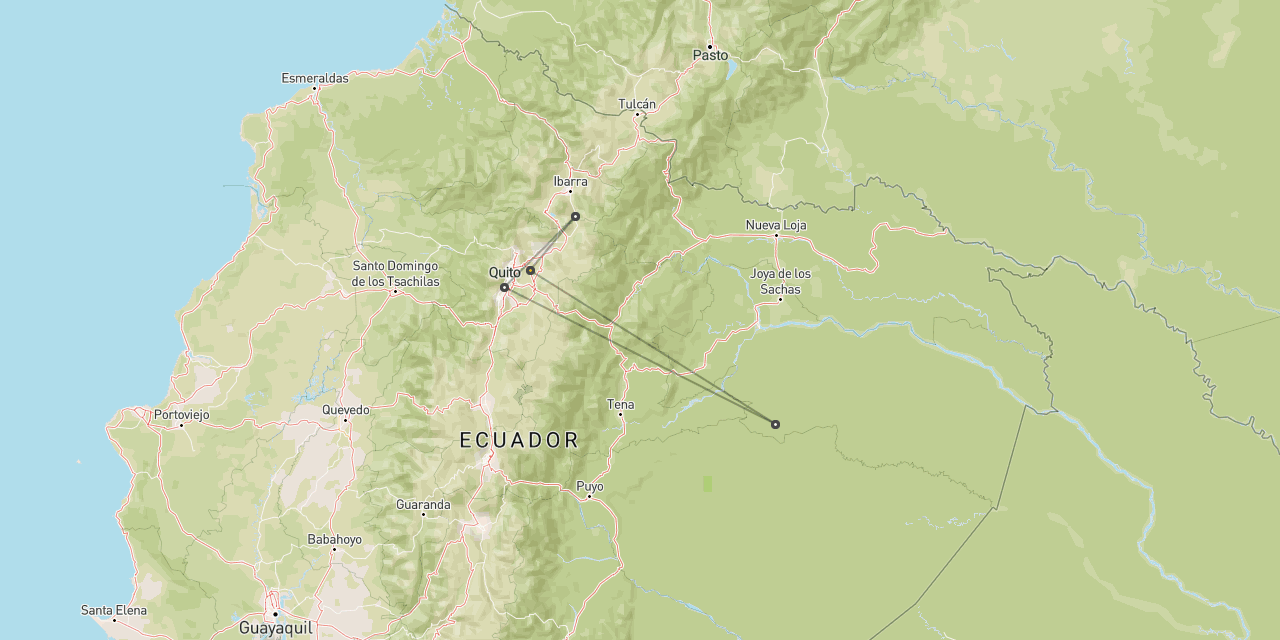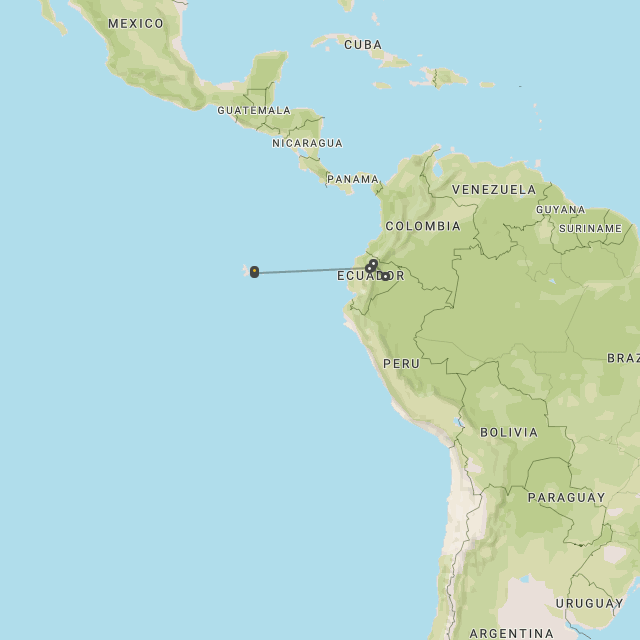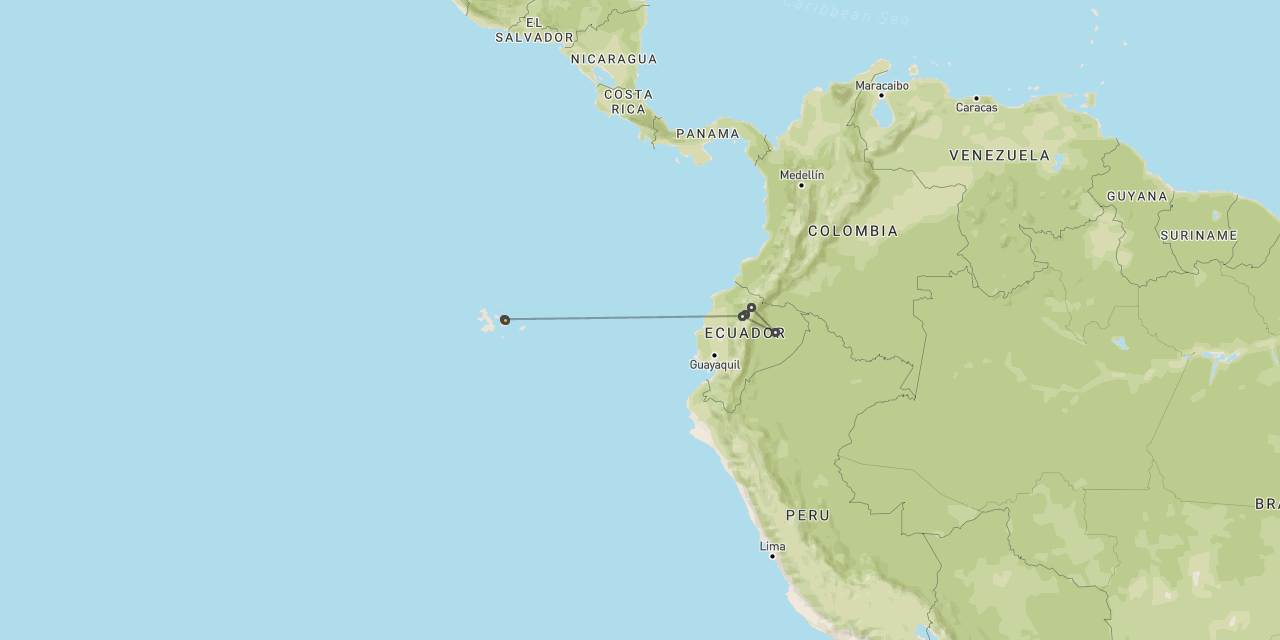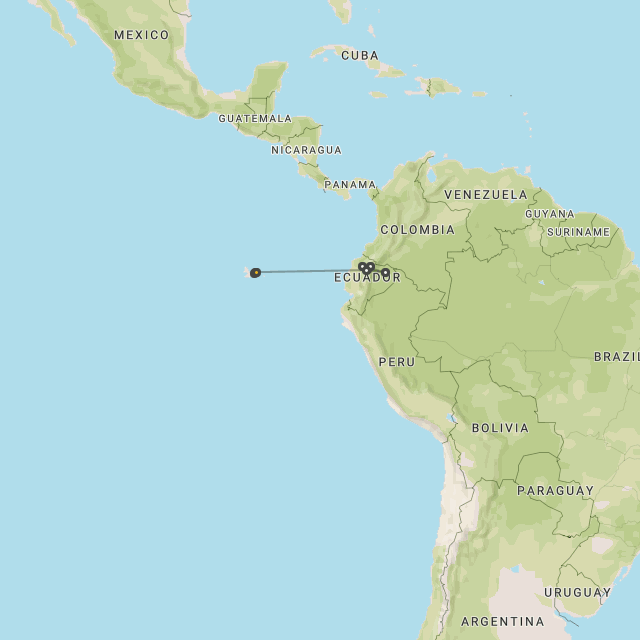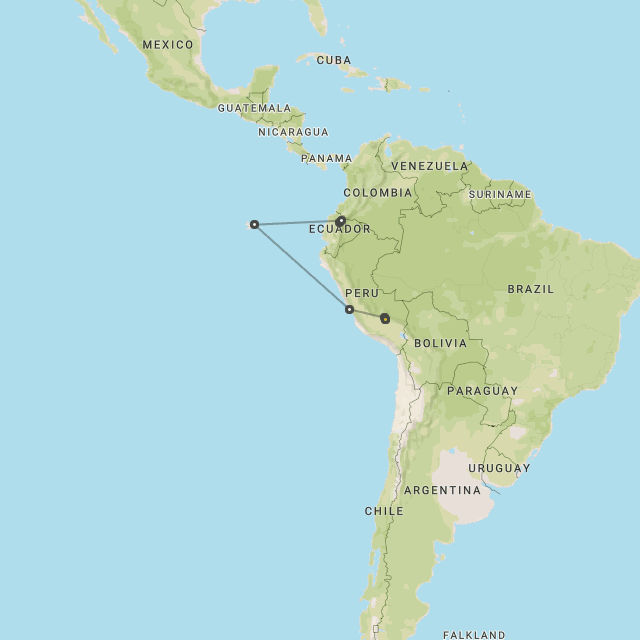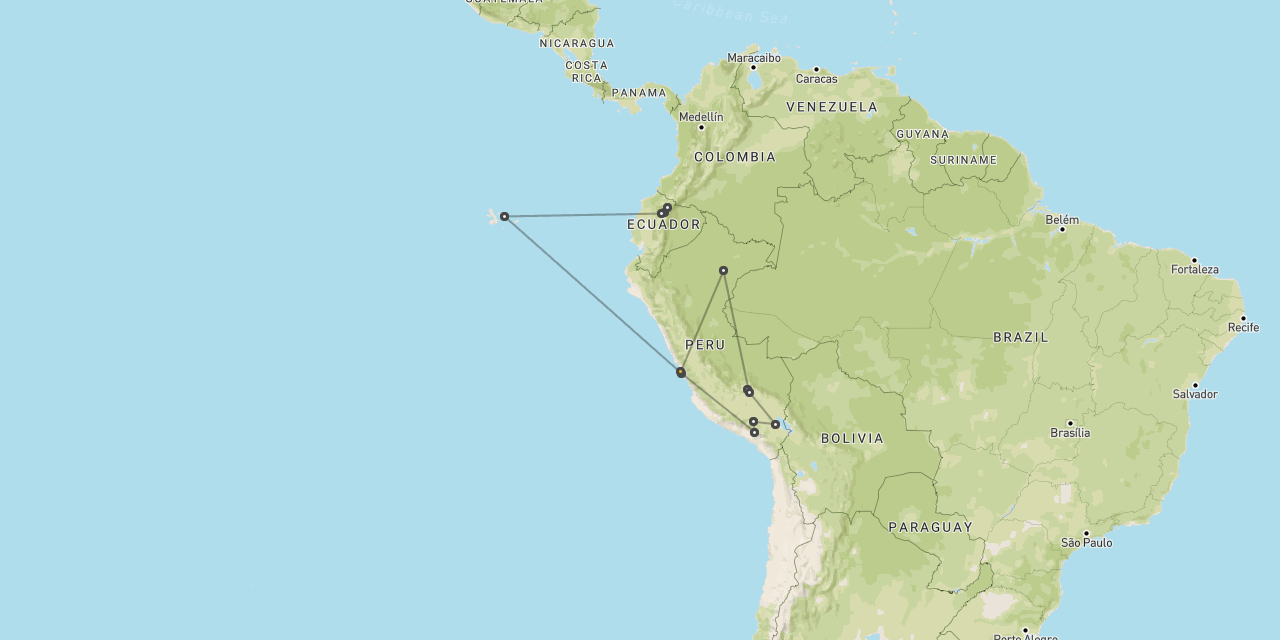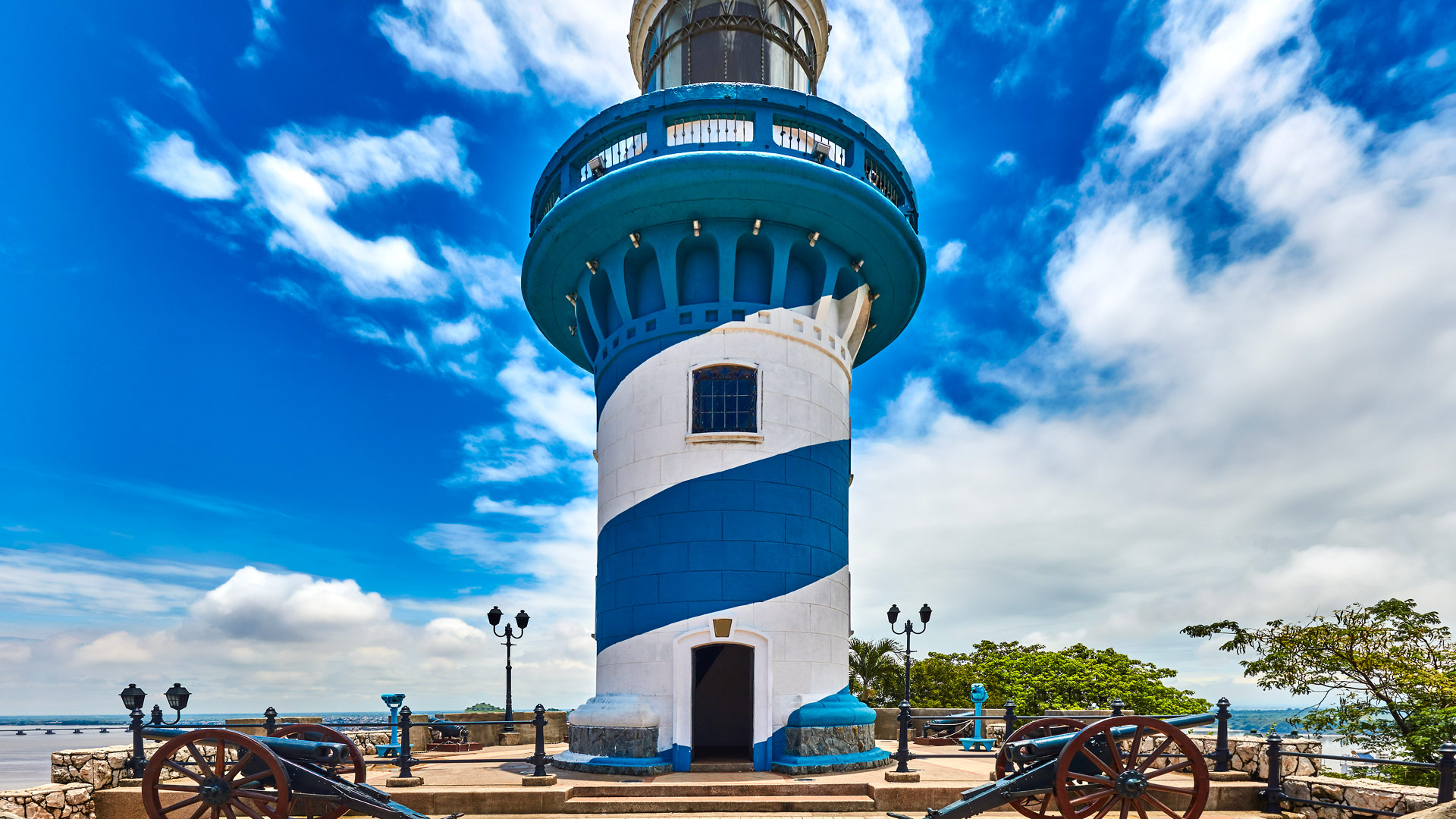
Travel to Guayaquil
Guayaquil
is an historic port
on the coast of Ecuador
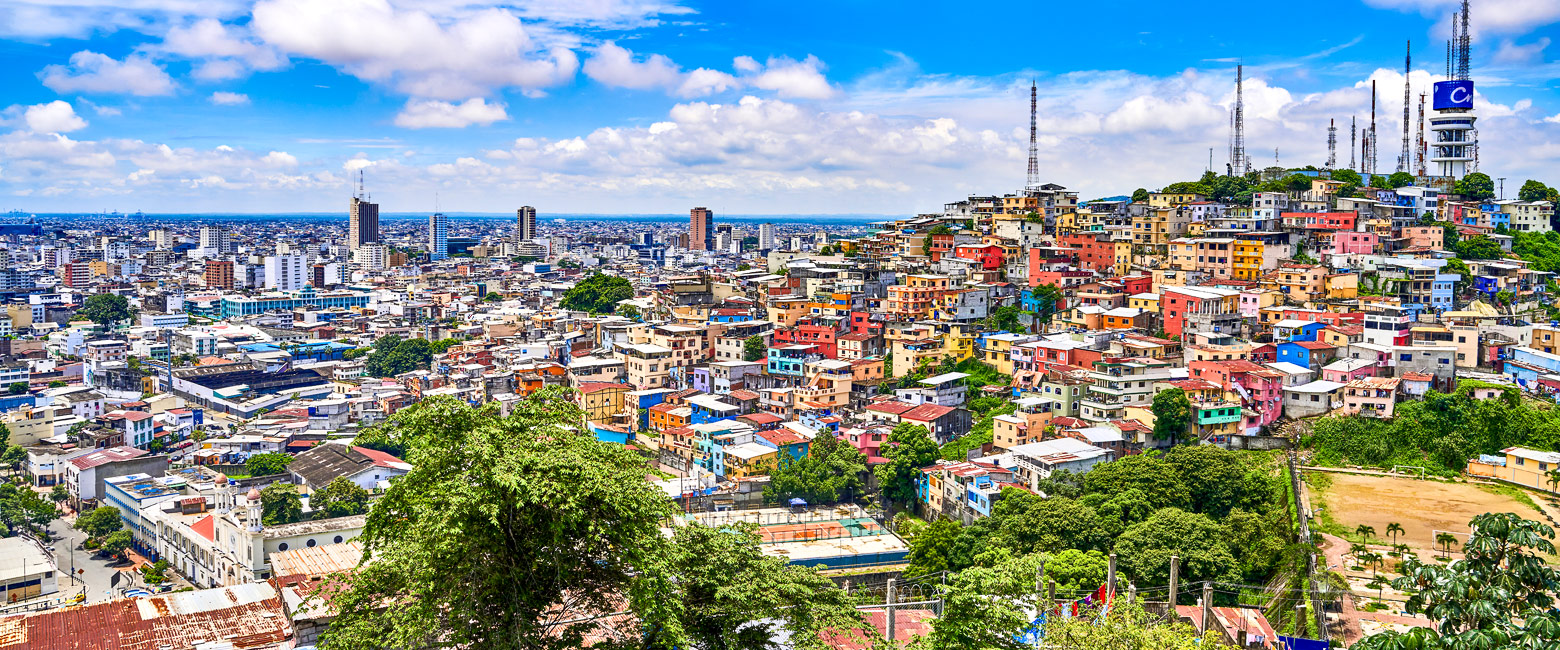
a relatively small but pretty historic centre
Set down on the coastal plateau, Guayaquil is the largest city in Ecuador, the main port and commercial hub for the country.
The city was founded by Spanish conquistador Francisco de Orellana in 1538, on the site of a small native village.
The location was prized for the protected harbour provided by the broad Rio Guaya, the city is situated over 50 km (30 miles) upstream from the ocean.
Guayaquil contrasts greatly with the two other main cities in Ecuador, Quito and Cuenca. The latter are relatively small and attractive places, set high in the Andes and benefiting from a mild year-round climate.
This place is a large commercial city, centred on a major port and home to virtually all of the heavy industry in the country. The population runs to around three million people, centred on a modern high-rise waterfront and with large suburbs sprawling out to the north and south.
The historic barrio of Las Peñas is perhaps the most interesting area to explore, with its network of narrow streets, colourful houses, bars and seafood restaurants. Some of the city’s parks are notable for their populations of land iguanas.
There are also options to explore the nearby mangrove swamps by kayak, notably at the Reserva Manglares Churute to the southeast.
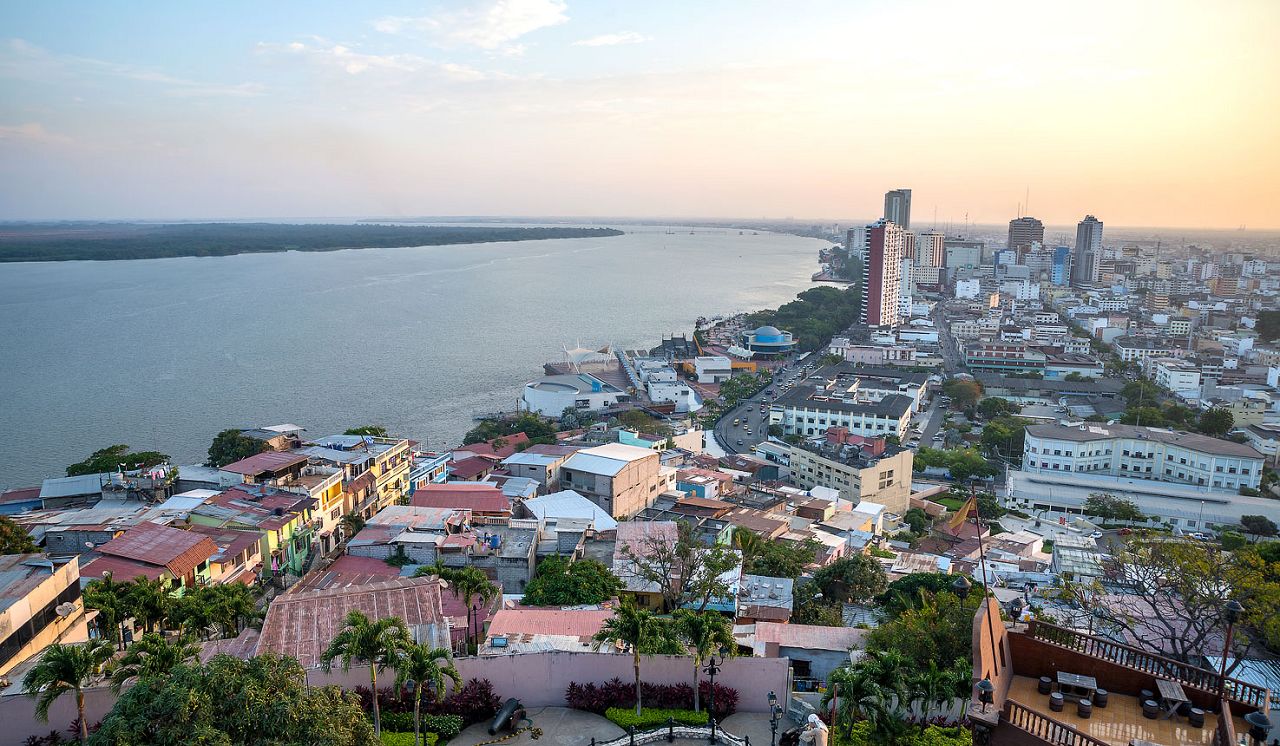
Gallery
Map
The usual reason to include Guayaquil in trips is in order to connect onto the flights to and from Galapagos, in which case overnight stops are often needed.
A few people travel out by road to the little-visited coastline at Puerto Cayo.
Seasonality
The best time to visit Guayaquil is generally considered to be during the Jun-Nov dry season.
Guayaquil has a subtropical savanna climate. Temperatures and humidities are constantly high year round, with the two seasons being largely defined by the variation in rainfall.
Although the weather patterns are very different to those in Quito, the dry seasons in each more-or-less coincide.
During the Jun-Nov dry season conditions are usually hot and dry, with lots of cloud cover. Average daytime temperatures usually reach around 30C/86F, with nighttime lows remaining up at around 21C/70F. Rainfall is low, at around 12mm (0.5”) per month. Humidities are high. Sunshine only reaches around 3 hours per day, which is around 25% of daylight hours.
During the Dec-May rainy season conditions are usually slightly hotter and a lot wetter, but with marginally more sunshine. Average daytime temperatures usually reach around 32C/90F, with nighttime lows up around 23C/73F. Rainfall is much higher, peaking at around 325mm (13”) per month in Feb-Mar. Humidities are very high. Sunshine surprisingly increases to around 4 hours per day, which is around 33% of daylight hours.
Getting there
The usual way to include Guayaquil in trips is at the end of an overland exploration, starting in Quito and travelling south through the Avenue of the Volcánoes to the attractive city of Cuenca, from where it is possible to descend the mountains to the coast.
Once in Guayaquil, most people simply overnight and then continue their trip with a flight out to Gaapagos.
This journey from Quito to Guayaquil can also be done by train, although since the higher quality tourist service stopped operating, this has become a much less comfortable and reliable proposition. Most train fans now content themselves with the day trip from Riobamba and Alausí down to the famous switchbacks of La Nariz del Diablo (Devil’s Nose) and back.
Guayaquil is served by the José Joaquín de Olmedo International Airport (GYE), which has regular connections to Quito and Galapagos. There are also direct connections with Bogota in Colombia, providing an alternative way to connect between Galapagos and locations worldwide.
For those few people who want to explore the tropical coastline of Ecuador, then it is possible to drive northwest out of the city to reach the Puerto Cayo area in around three hours.
Where to stay
There is only one decent boutique hotel in Guayaquil, the lovely and authentic Hotel del Parque.
Other than that, the main options are huge and rather conventional city hotels.
a stopover on the way to Galapagos
let us know your thoughts about Ecuador
and we will help you create the perfect trip
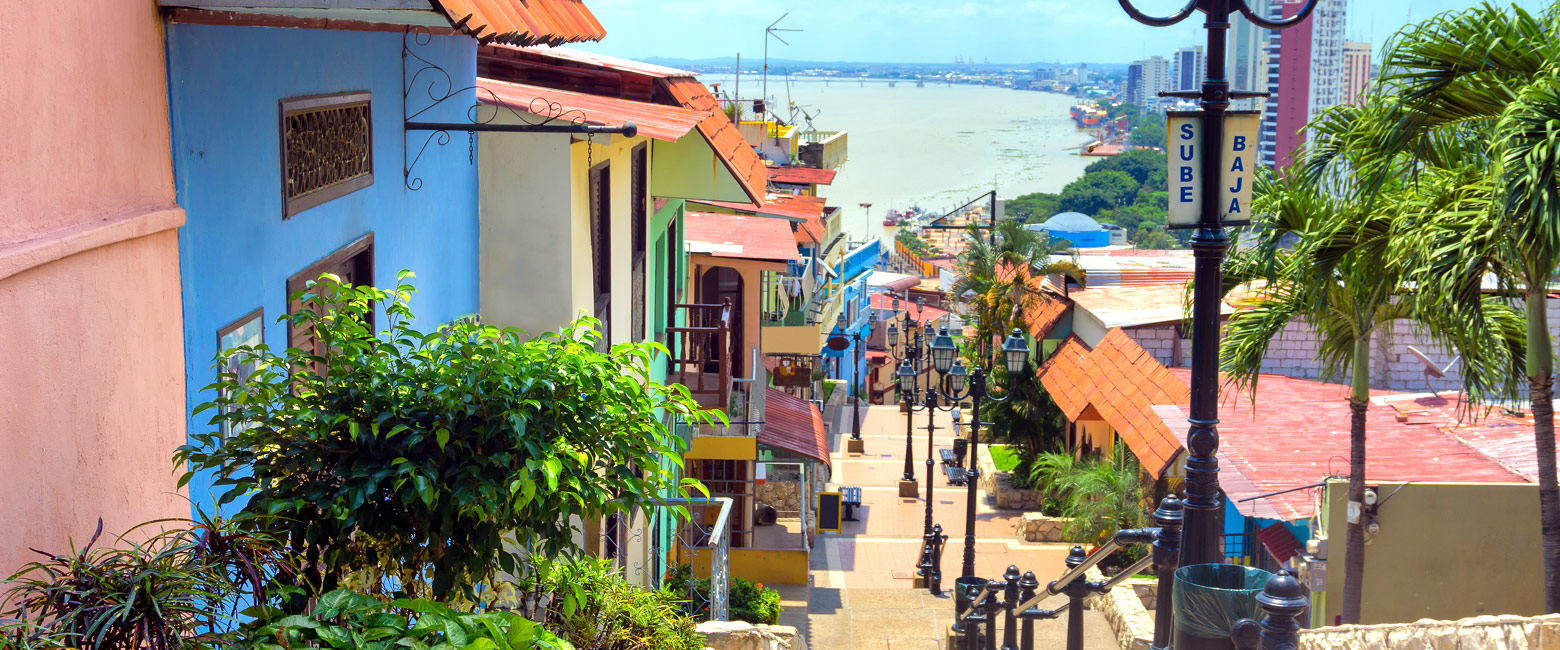
Extraordinary tailor-made adventures,
from earthy and edgy to easy and extravagant
From around USD 2500 per person, you set the ceiling
Sample Trips
Here are some of our popular trip shapes

Get started on your trip
It’s never too soon to get in touch, we are here to help with every stage of your planning.
Best Lodges
We regularly inspect and photograph all of the the best lodges, to ensure that we always recommend the most suitable options
Key Locations
Take a look around related locations. Click ‘View more’ to explore locations further afield.
Where Next?
Where Next?
We offer trips to dozens of fabulous countries.
Might one of these might be your next great adventure?

Please rotate your screen.












